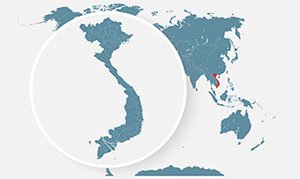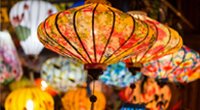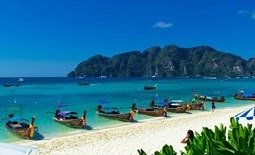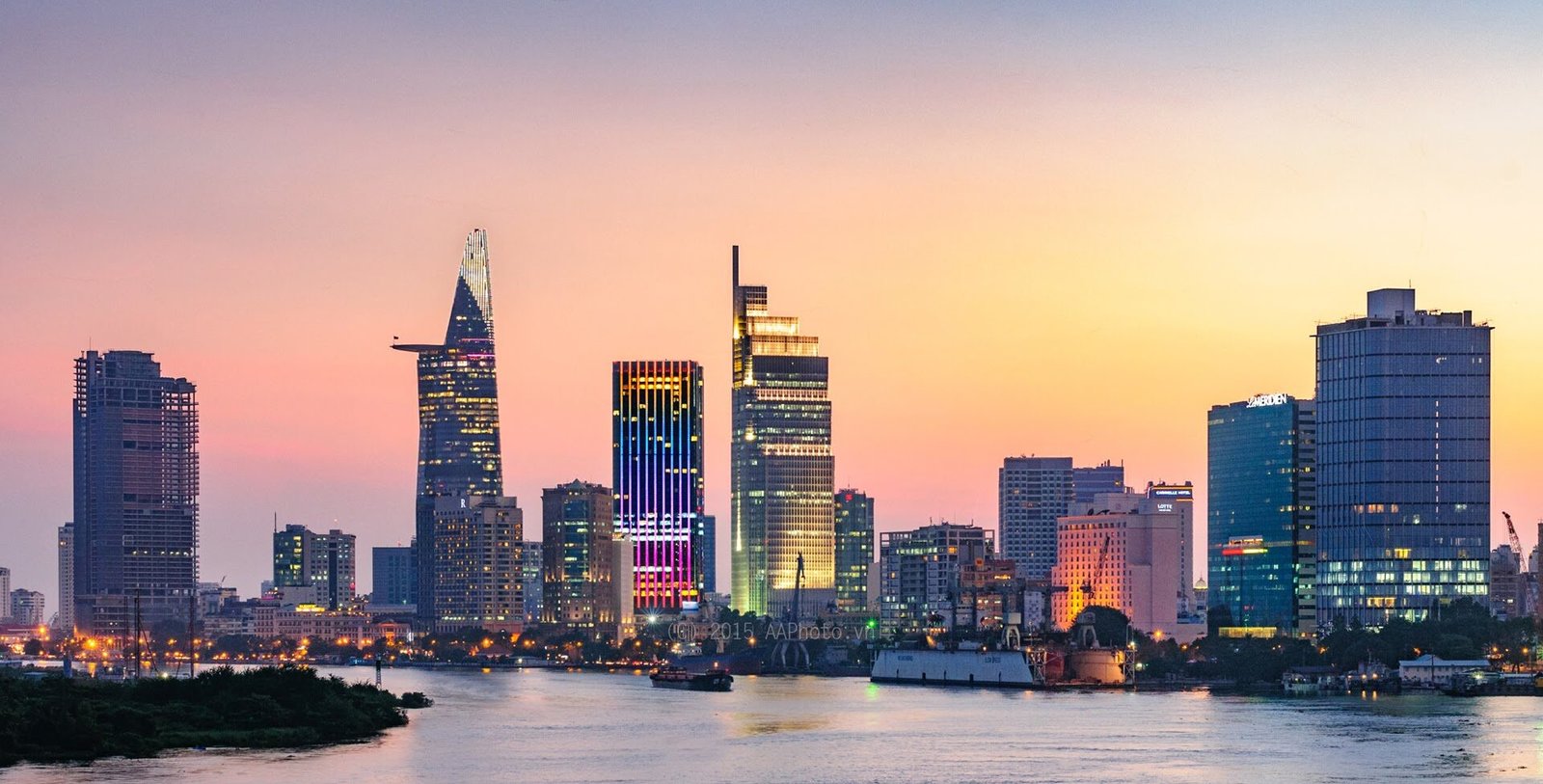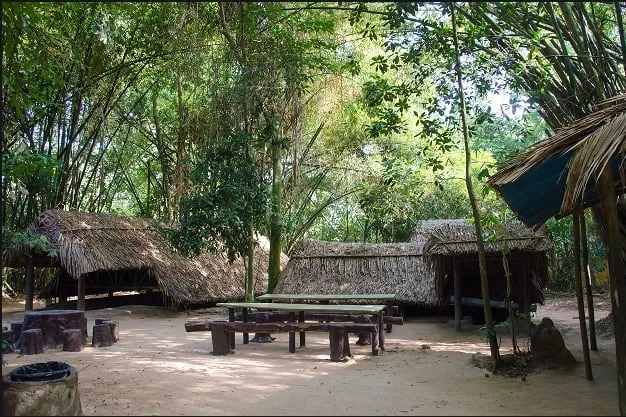Contents
ToggleWhere Is Ho Chi Minh City?
Ho Chi Minh City — formerly known as Saigon — is located in southern Vietnam, on the banks of the Saigon River. It lies approximately 1,100 kilometers south of Hanoi and just 1 hour 20 minutes by plane from Da Nang, making it a key transit point for both domestic and international travelers.
The city is strategically positioned near the Mekong Delta, giving visitors access to the vibrant waterways, floating markets, and lush countryside of southern Vietnam. Its location also makes it a convenient gateway to beach destinations like Vung Tau and Phu Quoc Island.
Most travelers arrive via Tan Son Nhat International Airport (SGN) — the country’s busiest airport. Unlike many global cities where airports are far from the center, SGN is only 6–8 kilometers (15–20 minutes) by car or taxi from downtown District 1, making arrival and transfer remarkably smooth.
Whether you’re planning to explore Vietnam’s bustling urban life, its war history, or head off into the southern jungles and deltas, Ho Chi Minh City is the ideal starting point.
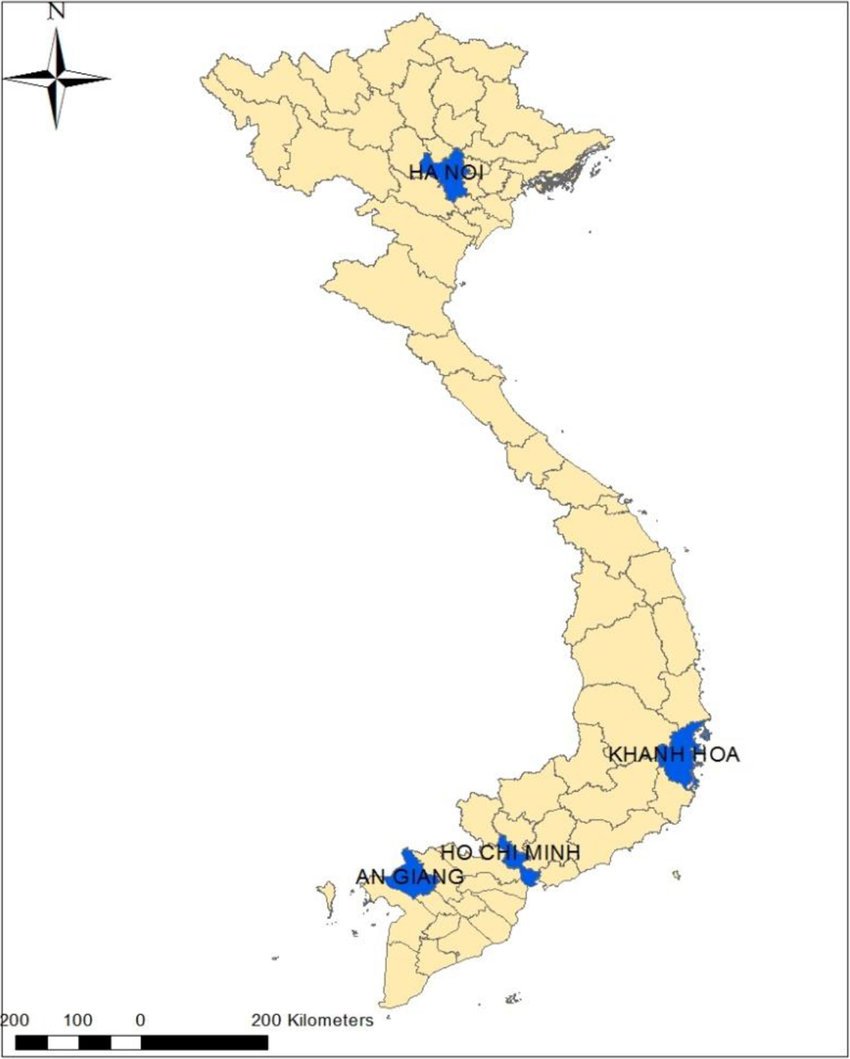
What Is Ho Chi Minh City Known For?
Ho Chi Minh City is Vietnam’s economic and cultural dynamo — a buzzing metropolis where tradition meets rapid modernization. It boasts some of the tallest skyscrapers in the country, sleek international hotels, upscale shopping malls, and a legendary food and nightlife scene that keeps the city pulsing late into the night.
But beyond the gleaming skyline lies a city rich in history. Once affectionately called the “Pearl of the Far East” during the French colonial era, Saigon was the capital of French Indochina and later the capital of South Vietnam during the war. Remnants of this layered past still shape the city’s identity.
Stroll along tree-lined boulevards, explore French-era architecture like the Saigon Notre-Dame Cathedral and Central Post Office, or sip coffee in a century-old shophouse. War museums and historic landmarks reveal the city’s pivotal role in Vietnam’s turbulent 20th-century history — while lively street markets and sidewalk eateries capture its enduring spirit and resilience.
Today, Ho Chi Minh City is not just Vietnam’s largest city — it’s also a symbol of its past, present, and future, all coexisting in one electrifying place.
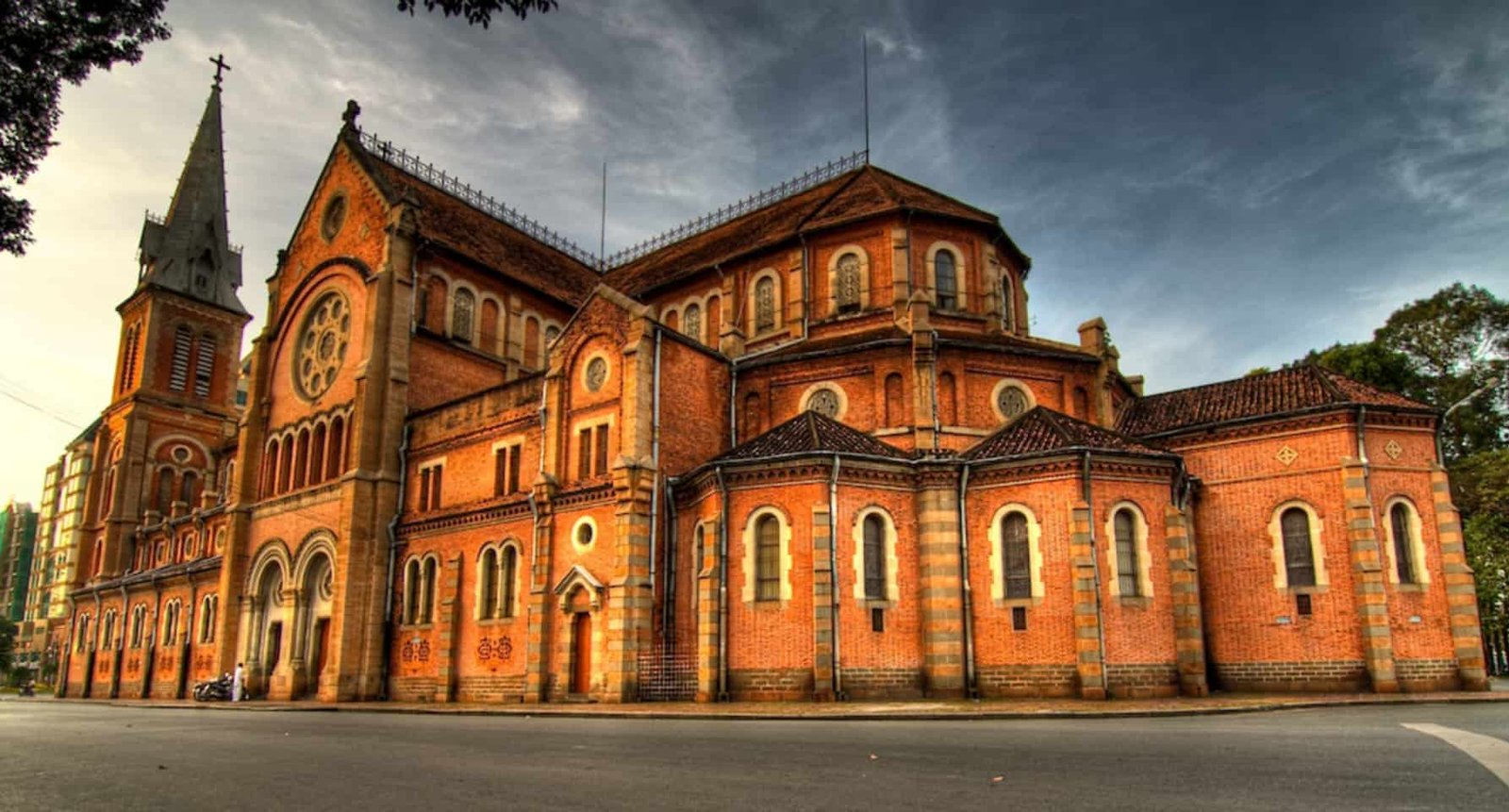
Best Time to Visit Ho Chi Minh City
Thanks to its tropical climate, Ho Chi Minh City is warm and vibrant all year round, making it a great destination no matter when you visit. However, understanding the two distinct seasons can help you plan a smoother trip:
🌞 Dry Season (December to May)
This is the best time to visit Ho Chi Minh City. Expect clear blue skies, low humidity, and daytime temperatures ranging from 28°C to 35°C (82–95°F). These months are perfect for sightseeing, outdoor markets, and day trips to the Mekong Delta or Cu Chi Tunnels. March and April tend to be the hottest, so light clothing and hydration are key.
🌧️ Wet Season (June to November)
During this period, the city experiences short but heavy afternoon showers, often lasting an hour or less. Don’t let the rain deter you — there’s still plenty of sunshine, and the rain brings a refreshing break from the heat. Plus, fewer tourists mean cheaper hotel rates and less crowded attractions.
🎉 Travel Tip: Tet Holiday (Lunar New Year)
Vietnam’s biggest celebration, Tet, usually falls in late January or early February. The city comes alive with colorful decorations, flower markets, and family celebrations. It’s a culturally rich time to visit — but be aware that many shops, restaurants, and attractions may close for a few days, and prices for transport and hotels may temporarily rise. Booking in advance is highly recommended.
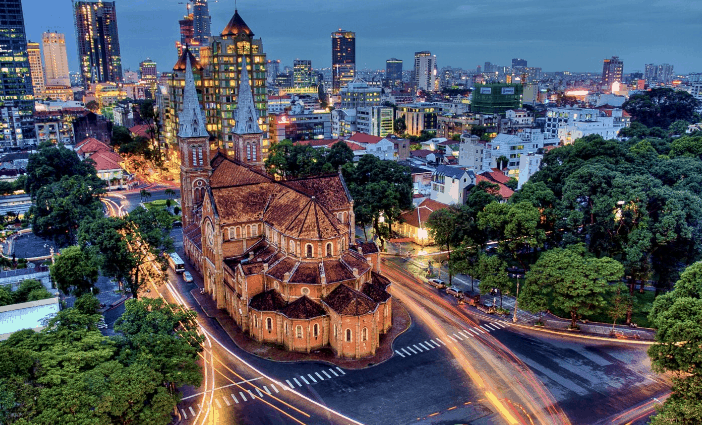
How to Get to Ho Chi Minh City
Getting to Ho Chi Minh City is easy thanks to its status as one of Asia’s major international gateways. Most travelers arrive via Tan Son Nhat International Airport (SGN) — Vietnam’s busiest airport, located just 15–20 minutes from the city center.
✈️ International Flights
From Europe:
- Direct flights are available from Paris via Air France and Vietnam Airlines, offering the quickest and most convenient access from Western Europe.
- One-stop options through major transit hubs like Doha (Qatar Airways), Dubai (Emirates), Bangkok (Thai Airways), or Singapore (Singapore Airlines) are excellent for travelers coming from cities such as London, Frankfurt, Amsterdam, and beyond.
From North America & Canada:
- While there are no direct flights as of now, travelers can connect through Asian hubs.
- Popular routes include Japan Airlines via Tokyo, China Airlines via Taipei, Korean Air via Seoul, or Cathay Pacific via Hong Kong — all offering efficient and well-reviewed service.
- Some U.S. cities like San Francisco and Los Angeles also have one-stop routes with Vietnam Airlines, EVA Air, or ANA.
From Australia & New Zealand:
- Vietnam Airlines, Jetstar, and Qantas offer direct and connecting flights from major cities like Sydney, Melbourne, and Auckland, usually transiting through Singapore or Bangkok.
From Southeast Asia:
- Frequent, short-haul flights connect Ho Chi Minh City with Bangkok, Singapore, Kuala Lumpur, Phnom Penh, and Jakarta — perfect for regional travelers or multi-country trips.
🛂 Arrival Tips
- Visa requirements vary by nationality. Many travelers can obtain an eVisa online before arrival.
- The airport is relatively small but busy — plan for around 30–60 minutes for immigration and baggage claim.
- Taxis and ride-hailing apps like Grab are readily available at the airport and are affordable for transfers into the city.
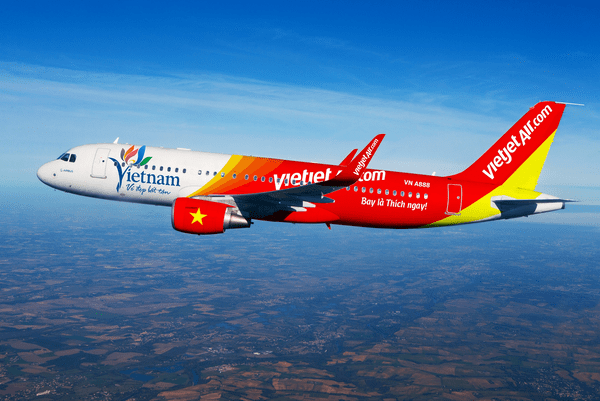
How to Get Around Ho Chi Minh City
Getting around Ho Chi Minh City is part of the adventure. While the city may seem chaotic at first glance, transportation options are plentiful, affordable, and increasingly tech-savvy.
🚗 Ride-Hailing Apps
The easiest and most popular way to get around is by using ride-hailing apps such as:
- Grab – Vietnam’s most widely used app for car and motorbike rides
- Xanh SM – Vietnam’s first electric taxi service, offering eco-friendly and quiet rides
- Be (Bee) – A local alternative to Grab, often with competitive pricing
These apps are cheaper and more reliable than traditional taxis, with upfront pricing, cashless payment, and English-friendly interfaces. You can also choose between a car or a motorbike ride depending on your comfort and budget.
🛵 Motorbike Taxis (Xe Ôm)
If you’re traveling solo and want to beat the traffic, hop on a motorbike taxi. Available through Grab and Be, this is one of the fastest and most affordable ways to navigate the city — and a classic Vietnamese experience in itself.
🚌 Public Buses
Public buses are very budget-friendly, with fares as low as 7,000 VND (~$0.30 USD). However, routes and schedules can be confusing for non-Vietnamese speakers. If you want to give it a try, apps like BusMap (with English support) can help you navigate the system.
🚶 On Foot (with Caution)
While some areas like District 1 are walkable, keep in mind that sidewalks are often shared with parked motorbikes or street vendors. Always be cautious when crossing streets — the traffic doesn’t stop, but locals will usually flow around you if you walk steadily and confidently.
🚲 Bicycles & Scooters
For longer stays, you can rent a bicycle or scooter to explore the city on your own terms. Many hostels and hotels offer rentals, but driving a motorbike requires a valid license and a good sense of local traffic dynamics.
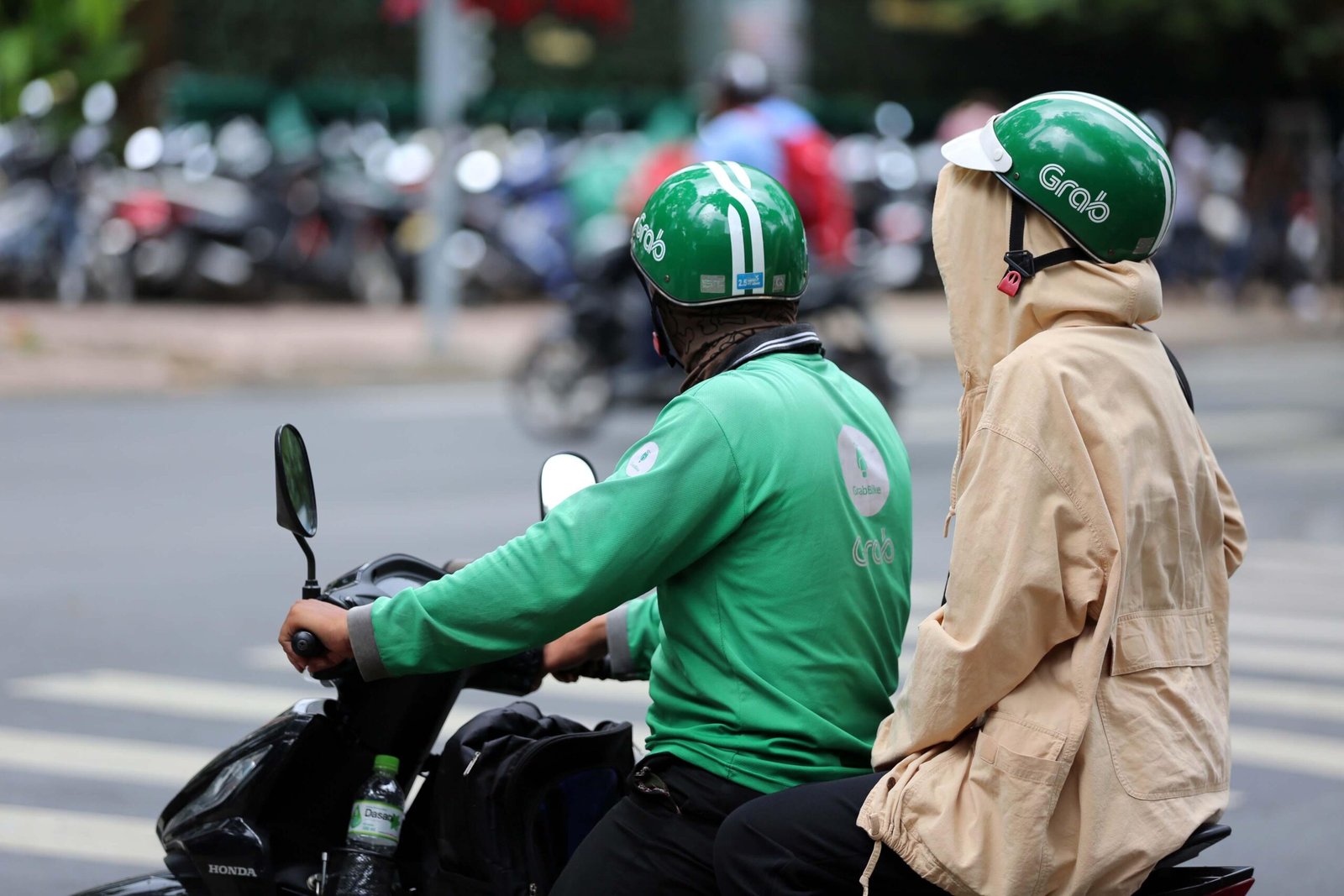
Top Things to See and Do in Ho Chi Minh City
Ho Chi Minh City is a dynamic fusion of history, culture, and modern life. From French colonial landmarks to bustling night markets, here are the must-see highlights for any traveler:
🛍️ Ben Thanh Market
Dating back to 1912, this iconic market in District 1 is a sensory overload — in the best way. Browse rows of stalls selling:
- Local handicrafts, silk, souvenirs, and áo dài (traditional dress)
- Street food favorites like pho, banh mi, com tam (broken rice), and fresh fruit juices
Tip: Bargaining is expected, so don’t be shy!
🏛️ French Colonial Architecture
Step back in time with these stunning reminders of Saigon’s French past:
- Saigon Central Post Office – Designed by Gustave Eiffel, it features a vaulted ceiling and vintage telephone booths.
- Notre-Dame Cathedral Basilica of Saigon – Built entirely with materials imported from France; currently under renovation but still photo-worthy.
- Saigon Opera House & City Hall – Grand colonial buildings lining the elegant Dong Khoi Street. Visit at night when the facades are beautifully lit.
🏯 Chinatown (Chợ Lớn)
Located in District 5, Chợ Lớn is one of the largest Chinatowns in Southeast Asia. Discover:
- Ornate temples like Thien Hau Pagoda, dedicated to the sea goddess
- Herbal medicine shops, gold stores, and lively markets
- A deep blend of Vietnamese and Chinese culture, cuisine, and spirituality
🏰 Reunification Palace (Independence Palace)
This 1960s-era landmark was the former presidential residence of South Vietnam. Tour the preserved war command bunkers, strategy rooms, and vintage decor — the exact site where the Vietnam War ended in 1975.
🎖️ War Remnants Museum
A powerful and moving museum that presents the impact of the Vietnam War through photos, artifacts, and personal stories. Includes displays on:
- The French colonial war
- Agent Orange aftermath
- Military vehicles and bomb remnants in the courtyard
Note: Graphic content; recommended for mature visitors.
🌿 FITO Museum (Museum of Traditional Vietnamese Medicine)
A hidden gem with a beautifully designed wooden interior. Explore over 3,000 artifacts, ancient books, and tools used in traditional healing practices. Interactive and well-curated — perfect for those seeking cultural depth.
🌇 Nguyen Hue Walking Street
This wide pedestrian boulevard in District 1 is a hotspot for locals and tourists alike. Enjoy:
- Nightly light shows and music fountains
- Street performers and food vendors
- The Café Apartment at No. 42 – an old apartment block transformed into a quirky vertical mall of cafés, bookstores, and boutiques
🚤 Saigon Water Bus
For just 15,000–30,000 VND (~$0.60–$1.20), hop on a water bus along the Saigon River. A relaxing and scenic way to see the skyline — especially at sunset.
🌅 Dinner Cruise on the Saigon River
Indulge in a romantic or family-friendly evening aboard luxury boats like:
- Bonsai Cruise – Known for its gourmet buffet and live music
- Indochina Queen – Elegant ambiance with traditional dance performances
Watch the skyline light up as you dine on Vietnamese cuisine and enjoy cultural entertainment.
🍜 Night Markets & Street Food
After dark, the city truly comes alive. Don’t miss:
- Ben Nghe Street Food Market – Clean, organized, and perfect for families wanting to sample multiple dishes in one stop.
- Bui Vien Walking Street – The backpacker’s party hub. Bars, live music, and endless street food — great for nightlife lovers, but loud and lively!
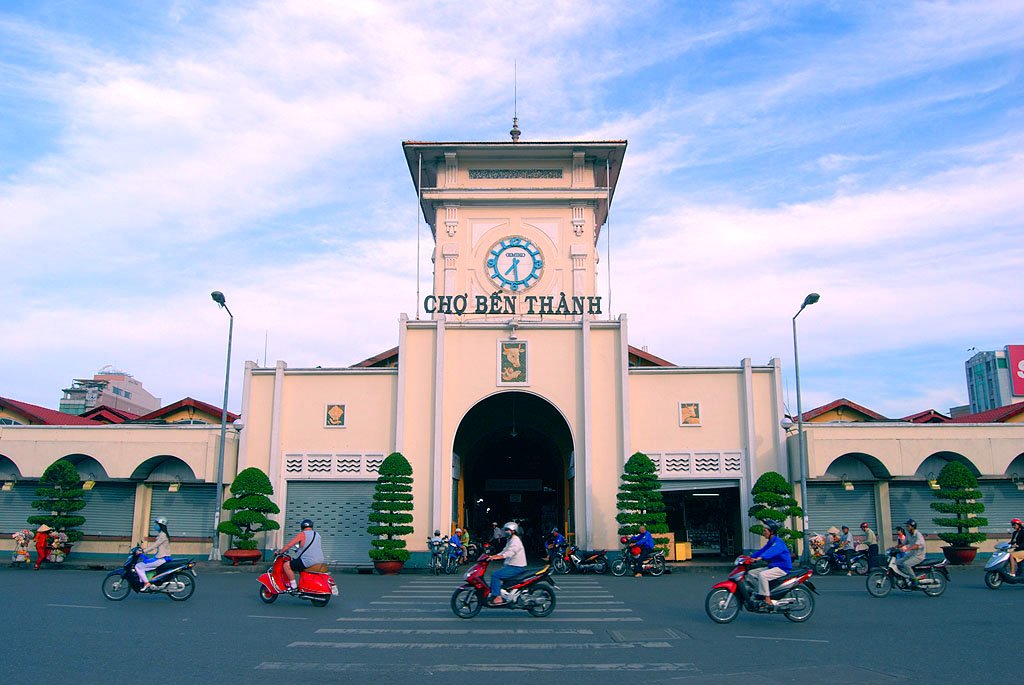
Must-Try Local Dishes in Ho Chi Minh City
Ho Chi Minh City is a street food paradise — bold flavors, fresh herbs, and a mix of French, Chinese, and Khmer influences. Whether you’re eating at a roadside stall or a local eatery, these southern Vietnamese specialties should top your food bucket list:
🍛 Cơm Tấm (Broken Rice)
A true Saigon classic. This humble dish uses fractured rice grains and is typically served with:
- Grilled pork chop (sườn nướng)
- Shredded pork skin (bì)
- Steamed egg meatloaf (chả trứng)
- Fried egg and pickled vegetables
Tip: Add fish sauce (nước mắm) for the full experience.
🍜 Hủ Tiếu
A lighter, sweeter alternative to pho, hủ tiếu features a clear pork-based broth with chewy rice noodles. Variants include:
- Hủ tiếu Nam Vang (Phnom Penh-style) – with minced pork, shrimp, and quail egg
- Hủ tiếu khô – served dry with a side of broth
Where to try: Look for popular chains like Hủ Tiếu Thanh Xuân or Hủ Tiếu Liên Hoa.
🥖 Bánh Mì
Vietnam’s most famous export — a crispy French baguette filled with:
- Grilled meats or cold cuts
- Pâté, pickled vegetables, cucumber, cilantro, and chili
Top spots: Bánh Mì Huỳnh Hoa (the “queen of bánh mì”) and Bánh Mì 37 Nguyễn Trãi (famous for grilled pork meatballs).
🥗 Gỏi Cuốn (Fresh Spring Rolls)
Healthy and refreshing rice paper rolls packed with:
- Shrimp, pork, vermicelli, and fresh herbs
- Served with hoisin-peanut dipping sauce
Perfect appetizer or light lunch on a hot day.
🍧 Chè (Vietnamese Sweet Dessert)
A colorful mix of beans, jelly, fruit, and coconut milk — served hot or cold.
- Chè ba màu (three-color dessert) with red beans, mung beans, and pandan jelly
- Chè thái – with tropical fruits and creamy lychee-flavored milk
Try it at: Chè Mười Sáu or Chè Hiển Khánh (open since 1959!)
Pro Tip:
Saigon’s best food is often found on tiny plastic stools in narrow alleyways. Follow the locals — if it’s crowded, it’s probably delicious.
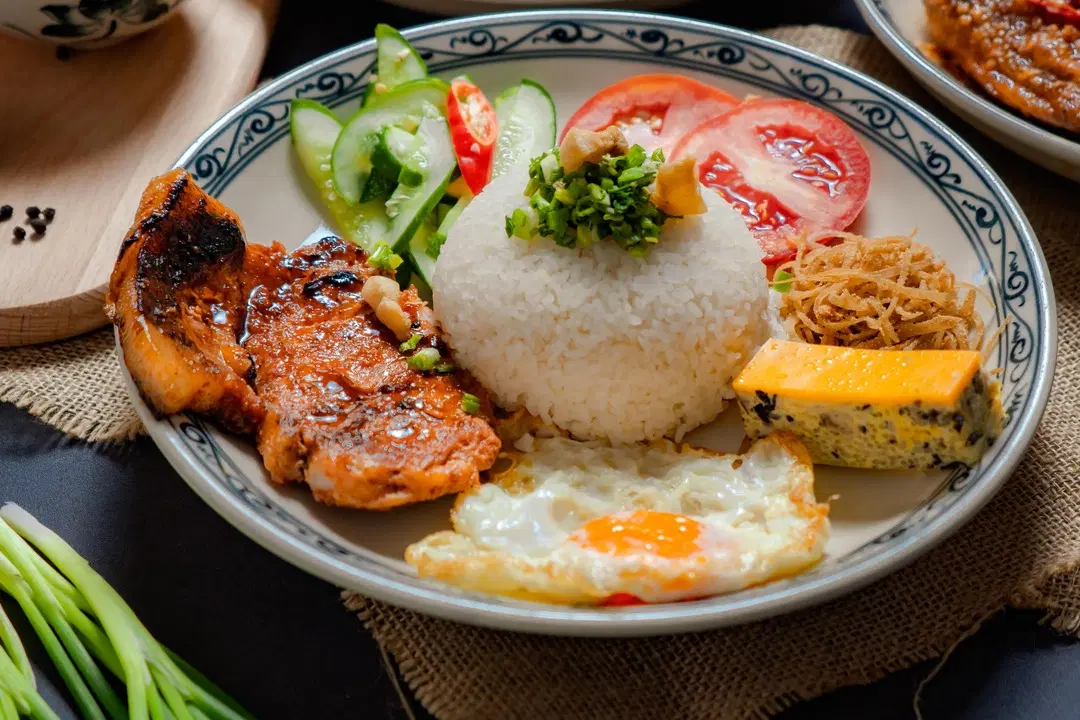
Where to Go After Visiting Ho Chi Minh City?
Finished exploring Ho Chi Minh City? Don’t stop there — Southern Vietnam and beyond offer unforgettable adventures just a few hours away. Whether you’re after history, nature, or beach time, here are the top day trips and short escapes:
🕳️ Cu Chi Tunnels (1.5 hours)
Step into Vietnam’s wartime past by crawling through the Cu Chi Tunnels, a vast underground system used by the Viet Cong.
- See hidden trapdoors, secret kitchens, and command centers
- Try your hand at shooting ranges (optional)
Best for: History lovers and families with older children
🌈 Cao Dai Temple, Tay Ninh (2 hours)
Visit the Great Temple of Caodaism — a striking architectural blend of East and West.
- Watch a noon prayer ceremony with robed devotees
- Learn about this unique Vietnamese religion that fuses Buddhism, Christianity, Taoism, and Confucianism
Best for: Culture and photography enthusiasts
🚤 Mekong Delta (1.5–2 hours)
Explore the lush waterways of the Mekong on a boat trip through floating villages and markets.
- Visit Cai Be or Ben Tre for coconut candy workshops, fruit orchards, and local music
- Optional overnight stays in riverside homestays
Best for: Nature lovers and those seeking authentic local experiences
🏝️ Phu Quoc Island (1-hour flight)
Escape to Phu Quoc, Vietnam’s island paradise in the Gulf of Thailand.
- White-sand beaches, coral reefs, waterfalls, and tropical forests
- Ideal for snorkeling, diving, and unwinding in luxury resorts
Best for: Beachgoers and honeymooners
🛣️ Phnom Penh, Cambodia (6–7 hours by bus)
Looking to visit another capital city? Cross the border to Phnom Penh, Cambodia.
- Explore the Royal Palace, Khmer cuisine, and sobering historical sites like the Killing Fields
- Buses and private transfers available daily
Best for: Travelers extending their Southeast Asia journey
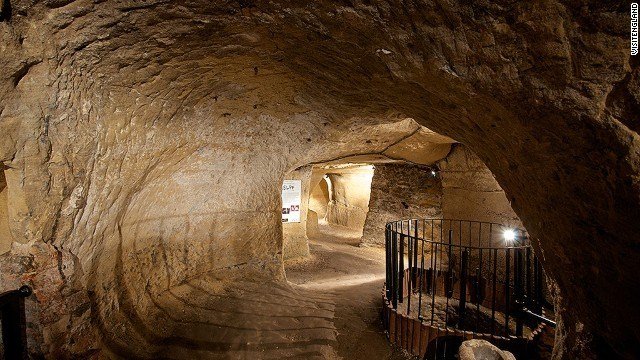
Final Travel Tips
-
Always keep an eye on your belongings in crowded places.
-
Dress modestly when visiting religious sites.
-
Tipping isn’t mandatory but appreciated in restaurants or by drivers.
-
Don’t be afraid to try street food—it’s fresh, flavorful, and a huge part of the experience.

